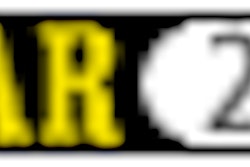
CLEVELAND - The selection of a soft-copy display monitor for diagnostic radiology is one of the more important elements in putting together a PACS because it directly affects how a radiologist works. At a price point averaging $10,000, and an average lifespan of less than two years at full performance for a cathode ray tube (CRT) display, the choice of diagnostic monitor is not an insignificant investment.
"The goal of soft-copy display is to optimize diagnostic accuracy. That is, reading from a monitor should be equivalent to or better than film. There are lots of studies comparing film reading to soft-copy reading, but none has concluded that a CRT is better than film," said Elizabeth Krupinski, Ph.D.
Krupinski presented the results of her diagnostic monitor research at the University of Arizona in Tucson, AZ, to SCAR attendees at a special session today on image perception issues in a soft-copy reading environment.
No matter what make or model of diagnostic monitor a radiologist is using, Krupinski is a strong advocate of controlling external factors in the reading room. Elements such as ambient room light, the viewing distance from the radiologist to the screen, the physical arrangement of monitors, chair choice, and the placement of peripheral devices all impact the reading ability of the radiologist.
"We found that one of the significant sources of glare on screen is the traditional white coat favored by many radiologists. At the U of A, we ask our radiologists to wear a light-blue coat. Although it’s not very attractive, it is better," Krupinski said.
Krupinski and her associates put monitors through a three-phase test process of physical evaluation, diagnostic accuracy, and visual search effectiveness. The physical-evaluation portion of the testing is very important because the physical parameters differ from monitor to monitor, even within the same model from the same manufacturer, according to Krupinski.
The first group of results she shared with the audience came from research she conducted on the differences between the same-sized monitors at 80 foot lumens (ftl) and 140 ftl of luminance. The test consisted of 50 mammography images with known calcifications and micro lesions. Experienced radiologists were asked to diagnose from the images, and their eye motion across the image was tracked via a head-mounted camera.
Krupinski found that there was little significant difference in diagnostic accuracy between the 80-ftl and 140-ftl monitors (96% and 97%, respectively). However, she did find that the viewing time was considerably shorter with the 140-ftl monitor versus the 80-ftl monitor. In addition, radiologists using the 140-ftl monitor demonstrated less time in decision dwells, as well as fixation clusters.
"Although diagnostic accuracy is essentially the same at either luminance, throughput is considerably higher with the use of a 140-ftl monitor," she observed.
The second group of results she presented related to the use of phosphor types in the monitor. She tested the diagnostic accuracy of two grayscale monitors, one with P45 phosphors -- known for a superior signal-to-noise ratio -- and one with P104 phosphors, as well as one color monitor.
Twenty posteroanterior (PA) chest films with known pulmonary nodules were examined by experienced radiologists. She found that users of the monitor with the P45 phosphors had a diagnostic accuracy rate of 93%, the P104-phosphor monitor had an 87% accuracy rate, and users of the color monitor had a 76% diagnostic accuracy rate.
She also observed that in regards to the total viewing time and time to find the first nodule, users of the P45-phosphor monitor were the fastest, and users of the color monitor were the slowest.
"At this point in time, black-and-white CRT monitors with P45 phosphors at 140 ftl are certainly better than color monitors for diagnostic reading," she said.
By Jonathan S. Batchelor
AuntMinnie.com staff writer
May 4, 2002
Copyright © 2002 AuntMinnie.com

















